Blending in
Engineers take a lesson from nature’s masters of disguise

Can you spot the cuttlefish? A common European cuttlefish camouflages itself on the seafloor.
Justine Allen
By Eric Niiler
What if you could build a device that could mimic the way undersea creatures escape predators? It could be used as an artificial skin that changes its appearance to hide something (even submarines). As an electronic wallpaper, it could thwart thieves by catching them on a hidden camera. Or the new system could turn an entire wall into a TV screen. Now how cool is that?
These are among the goals of a new project funded by the U.S. Navy. The project’s scientists are taking lessons from nature to create advanced electronics that may transform everyday objects. Their work also might allow us to better regulate the temperature of buildings and save energy.
Many far-reaching goals of this project are still a long way off. But scientists have begun making important strides. Their teachers are several underwater species with an amazing ability to hide in plain sight.
Thoughtless camouflage
Take cuttlefish, some lesser-known members of the cephalopod (SEFF oh lo POD) family. Like their cousins, octopuses and squid, cuttlefish tend to have big eyes, arms with suckers, a bulbous head and the ability to disappear before your eyes. They resemble creatures from a late-night horror movie. Nocturnal hunters, cuttlefish feed by night. And their movements mystify: They can hover like flying saucers in the water, then zoom forward by rippling fins along the edges of their bodies.
But their real claim to fame: Cuttlefish are supreme masters of disguise.
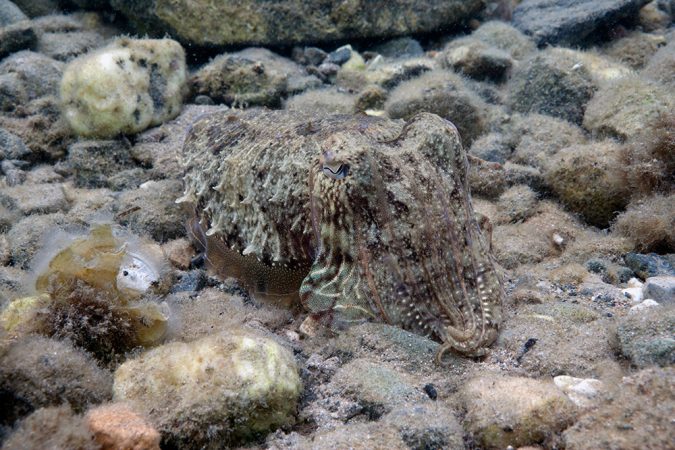
An octopus squirts out an opaque ink in which it hides. Not its cousins the cuttlefish and squid, though. They hide in plain sight by blending into their surroundings.
Marine scientists believe cuttlefish change their colors with help from tiny light sensors that cover their skin. And these critters don’t even have to give a thought to hiding. Their bodies appear to do it without thinking — that is, without receiving instructions from the brain.
Exactly how cuttlefish do this is a mystery. But Roger Hanlon is looking for answers. He’s a biologist at the Marine Biological Laboratory in Woods Hole, Mass. If his team’s assessment that the animal employs thought-free camouflage is confirmed, he says, “That would be a first.”
Hanlon has studied cephalopods for 30 years. An accomplished diver and photographer, he travels to secret spots in search of these quick-change artists. Some hide out in the cold waters off northwest Spain. He’s found others in a little bay near Palm Beach, Fla.
The scientist’s goal is to better understand how the skin of both the common cuttlefish (Sepia officinalis) and longfin inshore squid (Doryteuthis pealeii) function like giant cameras. Their skin collects light in the murky undersea world. Then it uses that light to determine how to adjust its coloring so that the creature can blend into its surroundings.
To probe how the critter does this, Hanlon’s team moved cuttlefish into his second floor laboratory at Woods Hole. There, pumps circulate fresh seawater from nearby Cape Cod through giant pipes to dozens of huge circular fish tanks.
Lydia Mathger dips a glass beaker into one tank and scoops up a palm-sized cuttlefish as it tries to scurry away. As she peers into the beaker, the animal hovers warily. She smiles with more than a little bit of pride at the critter. It’s a foreign species she has raised from a tiny egg, one of many flown in from Europe.
“Like babies,” Mathger says, the young cuttlefish need coddling. For example, she notes, “They have to be trained to take frozen food by hand.”
By studying these babies, she and Hanlon have gleaned some surprising facts. Their findings shed light on how cuttlefish masquerade by adopting the patterns found in their surroundings.
Within the cells of all living organisms are genes. These molecules contain information that controls cell activity, including the production of proteins. One such protein, opsin, detects light. It’s typically produced in the retina, a part of the eye. But in 2010, Mathger and Hanlon published a scientific study showing that the gene for opsin is also “turned on,” producing the protein, throughout cuttlefish skin. That proved a big surprise.
“When we started, we thought: ‘What on Earth is this doing in the skin?’” Mathger recalled. Why would skin need it? “It’s the same visual pigment as in the eye.”
Further probing showed the skin was producing opsin right next to tiny structures that control camouflage patterns in the skin. These structures, called chromatophores (kro MAT oh forz), are stretchy sacs of red, yellow or black pigment. Muscle fibers can pull them into different shapes. They can create patterns that change as needed to help a cuttlefish blend into its surroundings.
Mathger believes that the light-sensing opsin may allow cuttlefish to “see” colors through their skin. She and other scientists now are trying to find out if the opsin communicates with the nearby chromatophores. “We really don’t know at this point,” Mathger said. But her team suspects that what the light sensor reports may automatically trigger those colored sacs to reshape themselves into patterns that match their surroundings. And that would effortlessly give the critter a life-saving disguise.
Many sea creatures have both light-sensing molecules on their skin and the ability to disguise themselves, notes biologist Tom Cronin of the University of Maryland, Baltimore County. He’s been studying squid, flounder and mantis shrimp (that last one is a ferocious but tiny predator that lives in tropical reefs).
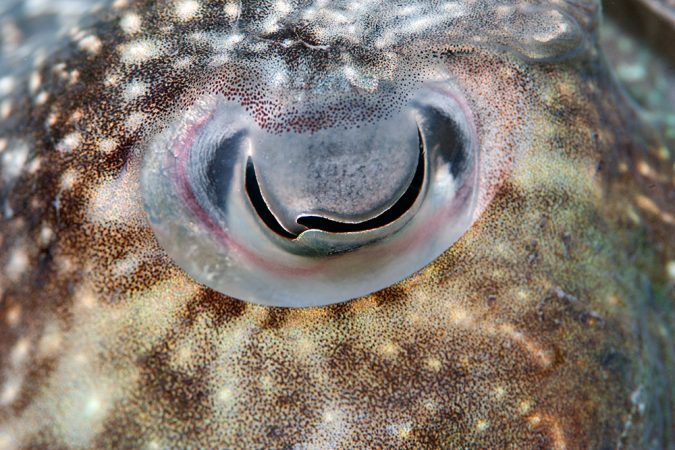
“Light sensing has lots of different jobs besides vision,” explains Cronin, who is working with Hanlon. Light’s presence, intensity and hue can relay information about whether it’s day or night, an aquatic animal’s depth — even whether a large predator is passing overhead. None of these is directly related to camouflage. But what’s surprising, Cronin observes, is that the skin of these creatures is somehow finding a new use for “the exact same protein that is in their eye.”
Mimicking nature
Engineers are now trying to adapt the things Cronin and Hanlon are learning for the development of electronic systems. Their goal: learning how to disguise nonliving objects.
Engineers use science to develop new products, tools or processes. Those at work on this project are exploring the idea of an artificial skin that — with the flip of a switch, or on its own — could make things disappear, says project scientist Richard Baraniuk. The electrical engineer works at Rice University in Houston, Texas. For example, he says: Attach the skin to the outside of a submarine and — like magic — its crew might make the vessel visually disappear.
Or imagine applying the system to an electronic “wallpaper” that worked much the same way, says project scientist John Rogers. He’s a materials scientist at the University of Illinois at Champaign-Urbana. Materials scientists investigate the physical and chemical properties of everything from metals and plastics to semiconductors and ceramics. Rogers imagines an electronics-based wallpaper that could transform the entire wall of a room into a television screen.
Both researchers are borrowing from cuttlefish biology to create e-skin devices that can change their colors and patterning using the light coming from their surroundings.
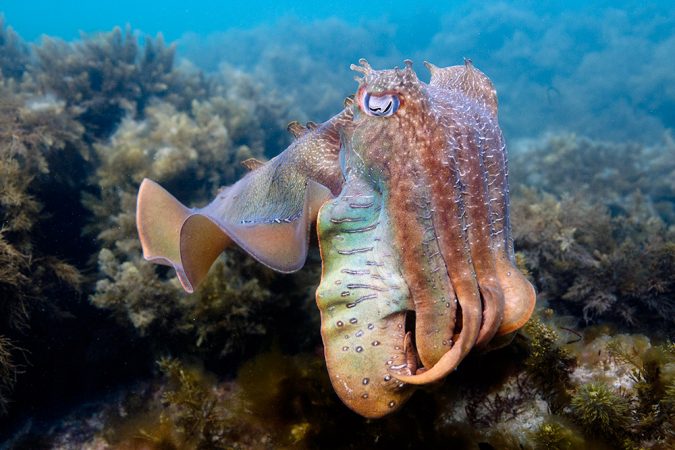
Baraniuk is developing a thin electronic wallpaper that’s “not like any kind of imaging device that has ever been designed.” It could see and transmit what’s happening in a room. This would effectively turn a wall into a massive video camera. And it could operate without anyone in the room knowing it — including a thief. That’s because the wall could camouflage itself independently. It would alter its appearance based on changes in incoming light rather than directions received from a central computer chip, or “brain.”
Baraniuk says the same material or coating might be able to disguise objects or even change the tint of your car. And just as the cuttlefish hides from predators, in theory so too could your car hide in traffic. (Although for safety reasons, hiding in traffic would be very unwise — and likely outlawed.) The coating could also do the opposite: make your car stand out.
Applied to the outside of buildings, the new wallpaper might even allow structures to keep cool in the summer or warm up in winter. How? By changing the color of the building. Dark colors absorb more heat from the sun, while light colors reflect that heat. So changing the color of a building could help its occupants stay comfortable.
Here, though, the light-changing properties of the skin would have to be regulated by something other than just light. Engineers would have to develop switches that would alter the artificial chromatophores in the building’s skin. Then the building’s occupants could vary the structure’s color based on season, sunlight intensity or a thermostat setting.
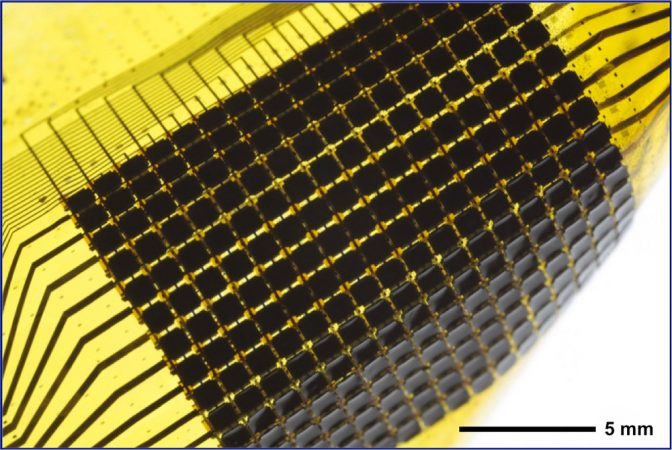
Rogers already has a sample black-and-white electronic wallpaper that can match its surroundings. Flexible, it can be molded over curved surfaces or around corners. He’s fashioning his panels from plastic and silicon. This matrix would be embedded with fluid sacs containing colored dyes.
Just as on the cephalopod skin, these sacs can stretch or contract. Such distortions would allow this surface to blend into its surrounds. Beneath the sacs is a lower layer of white, reflective material. It would soften the transition between the colors in adjacent sacs.
Still more to do
Many obstacles remain before engineers can create camouflage technologies that can disguise clothing automatically or make the color of your car suit your mood for the day.
Among those challenges: What will control when and how to turn on the disguise? In animals, a complex nervous system manages that, perhaps involving the brain. But an electronic wallpaper or submarine coating has no nerves or brain, notes Andrea Tao. She’s a nanosystems engineer at the University of California, San Diego. Engineers like Tao work on supersmall systems. Nano- is a prefix that means one billionth. Here, it means one billionth of a meter.
Engineers could install a computer to stand in for a brain. But they’d also have to figure out how to power it, keep it tiny and make it rugged enough to survive real-world conditions. That won’t be easy.
For instance, Tao says, “We don’t know what controls every squid cell.” Perhaps the squid sees something with its eyes and relays that information to its skin. Or perhaps its skin cells react on their own. “Understanding that level of control is a key part in translating a biological system to a man-made one,” she says.
In fact, she adds, “It takes a lot of creativity to come up with a camouflage system that will function like a squid’s does.” But having worked on other types of biologically inspired electronic devices, Tao is optimistic that creating an electronic skin or wallpaper based on a cuttlefish or squid is certainly possible.
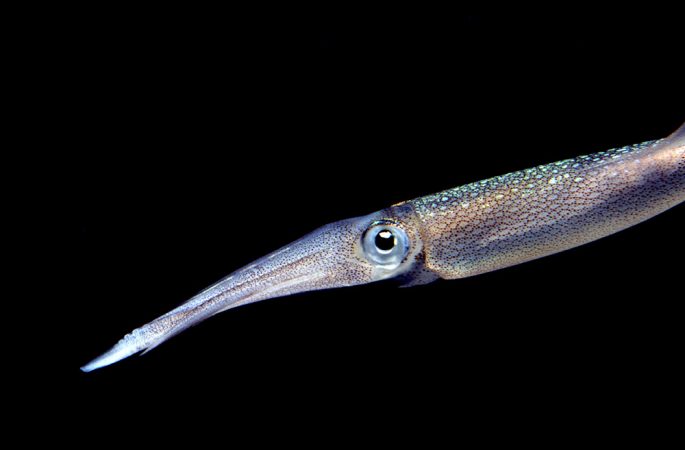
Baraniuk, Rogers and the other scientists say they are excited about a marriage of biology and engineering that could one day produce a wallpaper-like skin to disguise objects. Moreover, Baraniuk predicts, “Whatever we learn will be applicable way beyond mimicking camouflage.”
Power Words
cephalopod Sea creatures like squid, octopus and cuttlefish that have squishy bodies without a backbone, but have hard parts inside (a beak) and tentacles. There are about 800 species of cephalopods.
camouflage Hiding people or objects from an enemy by making them appear to be part of the natural surroundings. Animals can also use camouflage patterns on their skin, hide or fur to hide from predators.
chromatophore Tiny cephalopod organs filled with red, black and yellow pigment that are pulled into different shapes by muscles. As they change shape, they form distinct camouflage patterns on an animal’s skin.
engineering The application of scientific and mathematical principles to practical ends, such as the design, manufacturing and operation of efficient and economical structures, machines, processes and systems.
gene A segment of DNA that produces certain physical characteristics or operations in living things.
habitat The area or natural environment in which an animal or plant normally lives, such as a desert, coral reef or freshwater lake. A habitat can be home to many different organisms.
materials science The science of how the structures of materials on an atomic or molecular scale relate to their everyday properties.
opaque Unable to see through, blocking light.
pigment A substance that produces a characteristic color in plant or animal tissue. It is also the term for chemicals that manufacturers use to tint paint.
proteins Molecules that contain carbon, hydrogen, oxygen, nitrogen and usually sulfur. They are composed of molecules called amino acids. Proteins are fundamental components of all living cells and include many substances that are necessary for the proper functioning of an organism.
opsin A light-sensing protein that is usually found in a part of the eye called the retina.
silicon A nonmetal, semiconducting element used in making electronic circuits. Pure silicon exists in a shiny, dark-gray crystalline form and as a shapeless powder.
Word Find (click here to print puzzle)








